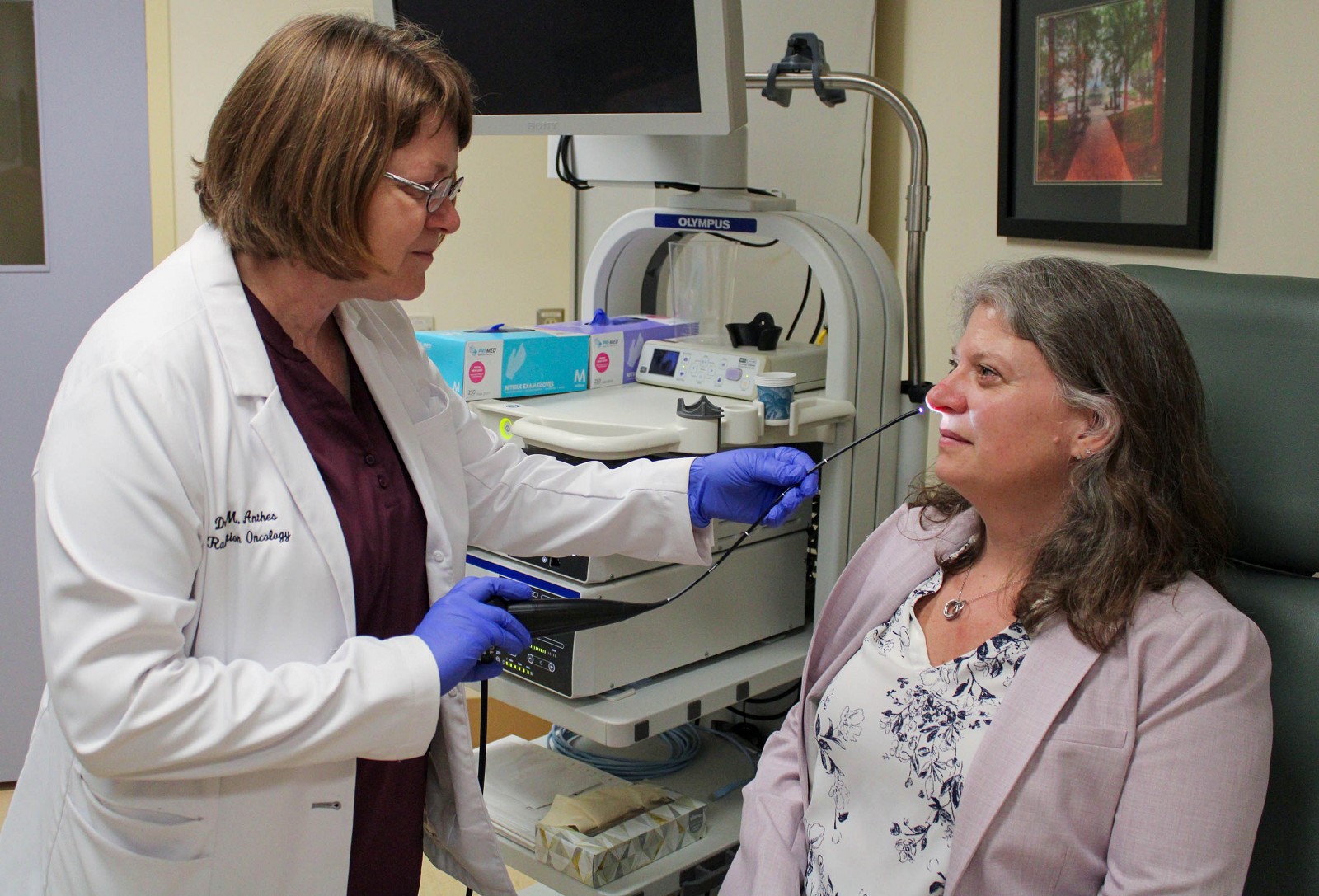New Scope Helps Reduce Wait Times for Head and Neck Cancer Patients
Published Wednesday, July 3, 2024

Pictured (L-R) Dr. Margaret Anthes performing a mock demonstration of the rhinolaryngoscope on Mellissa Linke, Manager of Radiation Therapy, Surgical Oncology & Tamarack House.
Many head and neck cancers appear somewhere along the upper aerodigestive tract, depending on the type of cancer. Oncologists at Regional Cancer Care Northwest can directly see the upper aerodigestive tract using a small camera called a rhinolaryngoscope. Thanks to the support of our generous donors, the Thunder Bay Regional Health Sciences Foundation recently funded another of these remarkable diagnostic cameras.
“The scope gives you a good view from the nasal cavity to the vocal cords,” said Dr. Margaret Anthes, a radiation oncologist who joined our Cancer Centre in 1996. She knows firsthand that technology has come a long way in a relatively short time.
“In the olden days, doctors used lights and mirrors to examine the throat,” Dr. Anthes said. “When the first scopes became available, you would look through an eyepiece. Today's scopes provide high-definition digital images on the screen that can be recorded.”
That visualization is important, especially before and after cancer treatment. Each patient is unique and every cancer is different. Oncologists combine rhinolaryngoscope results with other diagnostic imaging to help plan complex radiotherapy treatment.
“You can look at the tumours and then see what changes they undergo during and after treatment,” Dr. Anthes said. “It's an important tool for assessing tumours and assessing treatment.”
Our Cancer Centre holds three clinics per month for head-and-neck cancer patients. Patients meet with one of the three multidisciplinary teams that include a radiation oncologist, surgeon, nurse, dentist, and speech language pathologist. These clinics can also include a medical oncologist and a dietitian. Dr. Anthes is part of one of those teams.
“We see about 60 to 70 head and neck cancer patients per month for follow-up,” said Mellissa Linke, Manager of Radiation Therapy, Surgical Oncology & Tamarack House. “Because it's a multidisciplinary clinic, it's one appointment for the patient instead of booking several different ones with different specialists.”
That helps streamline care. It also means they can receive cancer treatment sooner.
The new scopes play an important role in that process. Not only can doctors see more detail, recording the scope means the multidisciplinary team can view the exam together later.
As you might imagine, each scope needs to be sterilized between uses. Although scopes can be sterilized two at a time, they need to be taken to another part of the hospital for cleaning. It takes about 45 minutes to sterilize the equipment, so the clinic needs several on hand to reduce wait times for patients.
Your donations and Thunder Bay 50/50 ticket purchases helped add another new rhinolaryngoscope for a full complement to improve patient care. It may seem like a small thing, but it's a big deal for our cancer patients. Read more about how you help make a difference at our Hospital every day at: www.healthsciencesfoundation.ca/latest-news
Article by Graham Strong